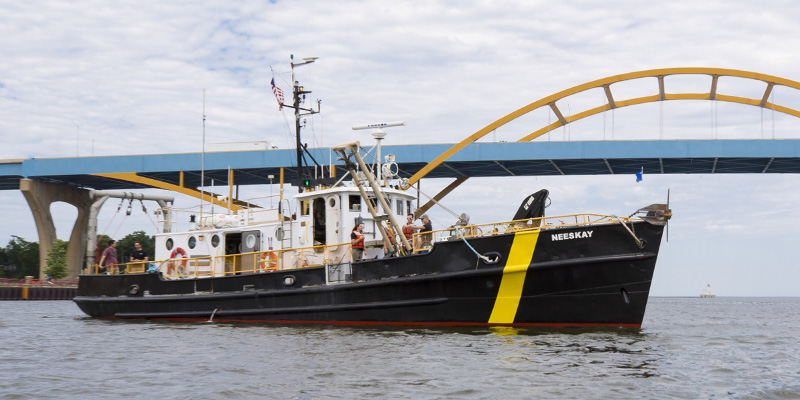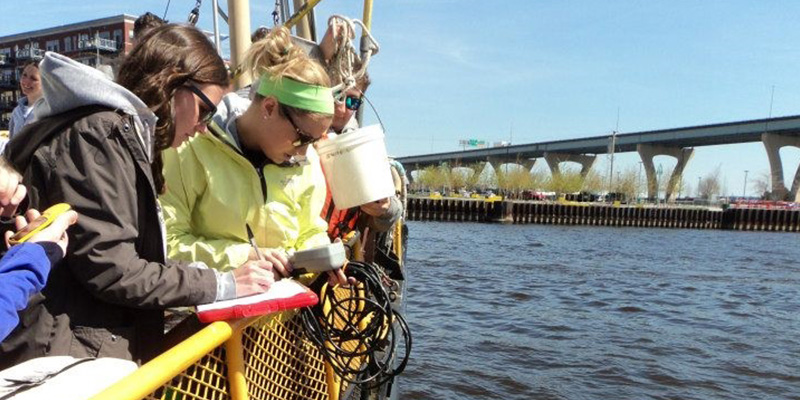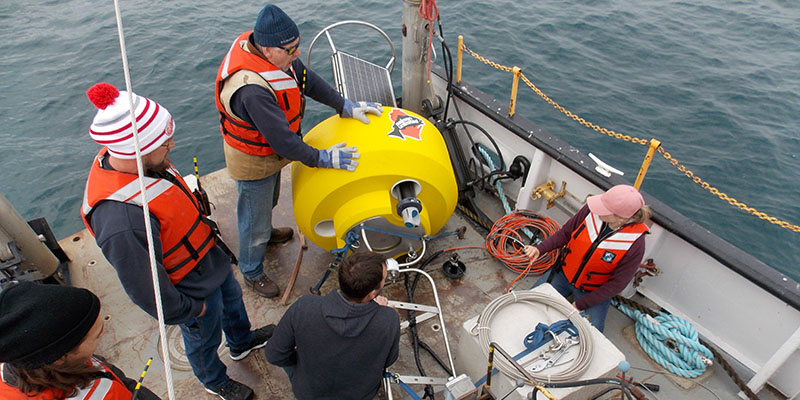Fleet Research Vessels
The most exciting scientific discoveries happens on the magnificent body of water right outside our door.
Students, faculty and scientists rely on the school’s R/V Neeskay — as well as small watercraft, remotely operated vehicles and a buoy-based observing system — to study the life and health of Lake Michigan.
Neeskay Research Vessel
The only year-round research vessel on the Great Lakes.
The Great Lakes are our living laboratory, and we operate the only research vessel that explores these inland seas year-round. Its name derives from the language of the Ho-Chunk, a Wisconsin Native American tribe, and it means “pure, clean water” — our vision for the Great Lakes.
Before the Neeskay was reconstructed as a research vessel, it was an Army T-boat used for tug and transport duties in the Korean War. It has powered scientific expeditions around the lakes since 1970. The Neeskay allows UWM students, faculty and scientists to focus on answering fundamental questions essential to the successful management of this crucial resource.
 Our Year-Round Freshwater Laboratory
Our Year-Round Freshwater LaboratoryBoats and Small Craft

A fleet of small boats for short research trips.
The research fleet ranges from a 26-foot Osprey used for short trips on Lake Michigan to small inflatable vessels used in fieldwork on inland lakes and rivers. Our underwater remotely operated vehicle (ROV) can descend to a depth of 1,000 feet and is equipped with a camera, a suction device for collecting samples, and sensors for collecting sensitive data like temperature, oxygen, pH and conductivity. The ROV can also shock fish for surveys and collect cores of soft sediment.
Great Lakes Observation System

We rely on real-time sensors to monitor Lake Michigan.
As partners in the Great Lakes Observing System (GLOS), we have access to a variety of instrumented buoys, surface vessel observing systems and autonomous vehicles that collect important physical, chemical and biological data that tell us about the health of the lake. To obtain long-term data and track trends in climate and ecological impacts, GLOS sensor arrays are deployed on solar-powered buoys at fixed locations throughout the Great Lakes.
